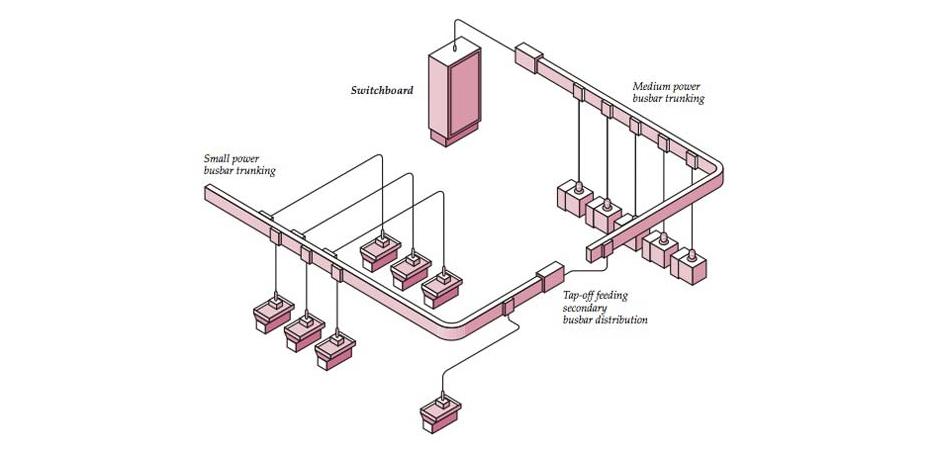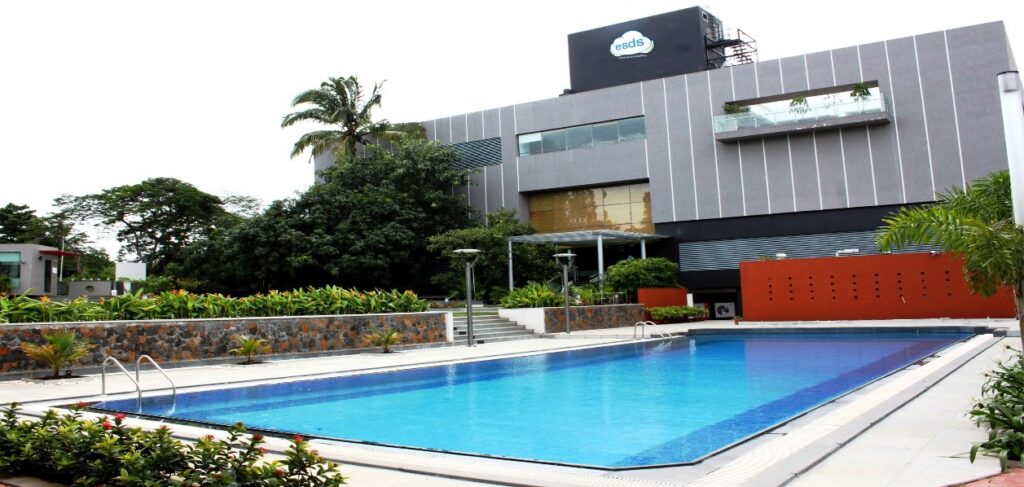Busbar Trunking: Advantages Over Cable

When comparing the total estimated cost of the power supply system with cabling and trunking using the same user, the cost of installation and materials system not only exceeds the cost of cabling, but in some cases much lower, and taking the time factor into account, busbars are simply irreplaceable. Below are some of the benefits.
- Busbars systems have a compact design. The compactness of the arrangement provides reliably isolated and tightly compressed flat conductors inside the enclosure. Bus systems require less space than cable systems, especially at loads in the hundreds or thousands of amperes.
- Tightly compressed tires, enclosed in a metal casing with a well-developed surface, can take a well-produced heat to the walls of the enclosure and from the environment. Cooling is better than cable systems.
- The modular design of busbar systems is flexible and mobile, allows you to apply it to buildings or structures of any type and configuration, with busbar systems, you can easily modify, add or move to another room, building, and reinstall it without any capital expenditure.
- Mounting willingness busbar systems are significantly higher than that of cable. This provides a much lower cost of installation and uses less time while working on the tire mounting.
- The design stage of the building with bus systems:
- Reduce the number of cable trays;
- Decreases the number of switchboards, it becomes possible to connect loads (of the mechanisms on the floors, etc.) directly from the junction boxes;
- Decrease the size of the main switchboards;
- Reducing the number of circuit breakers;
- Excludes many accessories used for cable systems;
- Simplified design and reduced development time of the project;
- Additional automated design project, except the visibility, said of the system components and the specification of the project.
- Rigid design elements of the system provide increased resistance to short-circuit compared to cable systems (for example, busbar 3000A: 264 kA and 120 kA peak thermal value of the current short-circuit).
- The minimum distance between the axes of the conductors reduces the induction of resistance, and the flat, relatively thin tire contributes to the optimal distribution of current density in it (crowding-out effect at high current loads to the surface is peculiar and minimal to cable systems), which lowers resistance. As a result of low levels of resistance and impedance, voltage loss at one and the same length of busbar systems is significantly lower than in cable systems.
- Low resistance values in the busbar system help to reduce the loss of active energy and limit the growth of reactive power to operate, compared to cable systems.
- Compact design and steel shell provide a significantly lower electromagnetic field around the bus system compared to c cable. A tire system of high load (4000A – 5000A) can be safely installed near the data cables and does not create electromagnetic interference in an information system.
- Typically, a particularly high amperage uses multiple cables for connecting one phase, where the cables can vary both in length and at the location and connection. Busbar systems eliminate the difference in length between the conductors that have the exact parameters of the active and inductive reactance and ensure that the load on each phase is maximum equal. Cable systems cannot be strictly parametrized.
- With a busbar power system, it can be easily, efficiently, and safely distributed on the line with the junction boxes in places where it is needed. Location data junction boxes can be easily and safely changed if necessary in the future. In addition, there is always the possibility of increasing the number of junction boxes.
- Bus systems consist of fully certified standard cells, where everything is made to eliminate human error. For example, junction boxes and plugs are tested and certified parts of the busbar system and meet all safety requirements. The reliability of the adherence of all junction boxes is standardized and does not depend on the installation. Security Connection cable systems depend on the experience of the installer.
- Busbar systems cannot be damaged by various rodents, which prevents the steel casing, unlike the unprotected cable systems.
Thus, the busbar has significant advantages over cable, such as improved electrical performance, simplified, and at the same time, reliable electricity distribution scheme, the minimum spatial volumes, speed installation and reduce time spent on installation, flexibility, and transformability of the system, various kinds of a high degree of protection, ease of maintenance and energy savings in data center operation.

- How Cloud Computing Is Changing The Labor Market - March 25, 2015
- Adopting Infrastructure as a Service Can be a Good Deal - March 17, 2015
- Will Virtualize? Take These Six Points Into Consideration - March 12, 2015

Thank you for good article!
Busbar has a lot of Advantages vs Cable.
But each project is individual and in some situation cable can be better.